
Match the polymers given in column I with their repeating units given in column II.
Column I Column II (a) Acrilan (i)
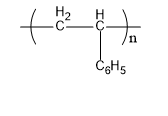
(b) Polystyrene (ii)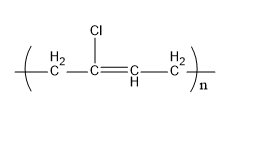
(c) Neoprene (iii)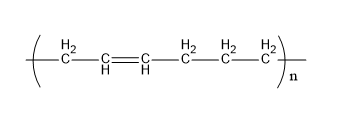
(d) Novolac (iv) 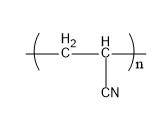
(e) Buna-N (v) 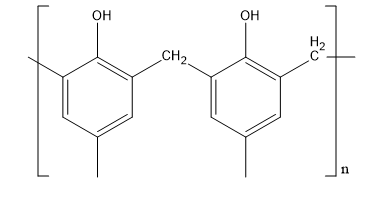 (vi)
(vi)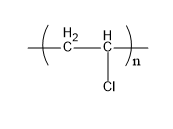
| Column I | Column II |
| (a) Acrilan | (i)
 |
| (b) Polystyrene | (ii) |
| (c) Neoprene | (iii) |
| (d) Novolac | (iv)  |
| (e) Buna-N | (v)  (vi) (vi) |
Answer
218.7k+ views
Hint: Polymer defines a very large molecule made up of many small numbers of monomers. Some examples of polymer are polyethene, polyester, etc. Some of the polymers are very important in our day-to-day life.
Complete Step by Step Solution:
Let's understand the given polymers in detail. Acrilan is a polymer which is very hard in nature. Also, it has a very high melting point. It is also known by the name of orlon. When acrylonitrile undergoes additional polymerization, it gives acrylonitrile. Its structure is,
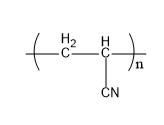
Fig: Acrilan
Therefore, A matches (iv).
Now we will discuss polystyrene. The monomer units that form polystyrene are styrene. Its commercial manufacturing is done from petroleum. Its structure is,
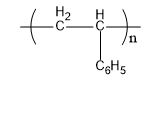
Fig: Polystyrene
Therefore, B matches (i)
Neoprene is a synthetic rubber. The monomer units that form a neoprene are chloroprene. It is formed by the polymerization process. Its structure is,
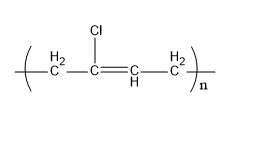
Fig:Neoprene
Therefore, C matches (ii).
Let’s discuss about novolac. This polymer is synthesised from formaldehyde and phenol. This polymer has a very molecular weight. Its polymer chain is straight. Its structure is,
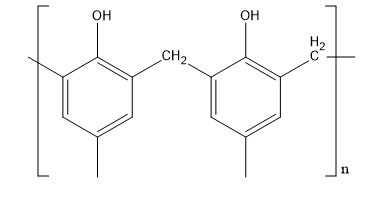
Fig:Novolac
Therefore, D matches with (v).
Buna-n is a polymer formed from acrylonitrile and 1,3-butadiene. Its structure is,
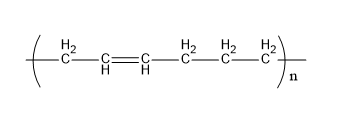
Fig:Buna-N
Therefore, E matches (iii)
Hence, the complete table is:
Note: The process of polymer formation from the monomers is termed polymerization process. For example, the polymerization of ethane gives the polymer of polyethene. There are two types, addition and condensation polymerization.
Complete Step by Step Solution:
Let's understand the given polymers in detail. Acrilan is a polymer which is very hard in nature. Also, it has a very high melting point. It is also known by the name of orlon. When acrylonitrile undergoes additional polymerization, it gives acrylonitrile. Its structure is,

Fig: Acrilan
Therefore, A matches (iv).
Now we will discuss polystyrene. The monomer units that form polystyrene are styrene. Its commercial manufacturing is done from petroleum. Its structure is,

Fig: Polystyrene
Therefore, B matches (i)
Neoprene is a synthetic rubber. The monomer units that form a neoprene are chloroprene. It is formed by the polymerization process. Its structure is,

Fig:Neoprene
Therefore, C matches (ii).
Let’s discuss about novolac. This polymer is synthesised from formaldehyde and phenol. This polymer has a very molecular weight. Its polymer chain is straight. Its structure is,

Fig:Novolac
Therefore, D matches with (v).
Buna-n is a polymer formed from acrylonitrile and 1,3-butadiene. Its structure is,

Fig:Buna-N
Therefore, E matches (iii)
Hence, the complete table is:
| Column I | Column II |
| (a) Acrilan | (iv) 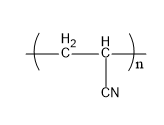 |
| (b) Polystyrene | (i)
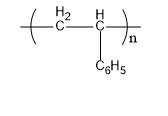 |
| (c) Neoprene | (ii)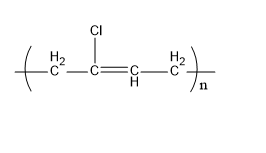 |
| (d) Novolac | (v) 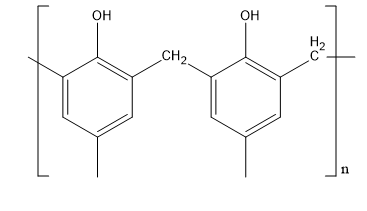 |
| (e) Buna-N | (iii)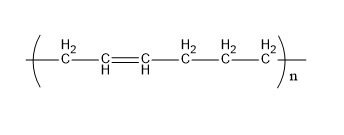 |
Note: The process of polymer formation from the monomers is termed polymerization process. For example, the polymerization of ethane gives the polymer of polyethene. There are two types, addition and condensation polymerization.
Recently Updated Pages
Is PPh3 a strong ligand class 12 chemistry JEE_Main

Full name of DDT is A 111trichloro22bispchlorophenyl class 12 chemistry JEE_Main

Sodium acetate on heating with soda lime produce A class 12 chemistry JEE_Main

Find the isoelectric point pI of Lysine A 556 B 974 class 12 chemistry JEE_Main

The order of basicity among the following compounds class 12 chemistry JEE_Main

The number of isomers in C4H10O are a7 b8 c6 d5 class 12 chemistry JEE_Main

Trending doubts
JEE Main 2026: Application Form Open, Exam Dates, Syllabus, Eligibility & Question Papers

Derivation of Equation of Trajectory Explained for Students

Hybridisation in Chemistry – Concept, Types & Applications

Understanding the Angle of Deviation in a Prism

Understanding Collisions: Types and Examples for Students

Understanding Atomic Structure for Beginners

Other Pages
NCERT Solutions For Class 12 Chemistry Chapter 1 Solutions - 2025-26

NCERT Solutions for Class 12 Chemistry Chapter Chapter 7 Alcohol Phenol and Ether

NCERT Solutions ForClass 12 Chemistry Chapter Chapter 8 Aldehydes Ketones And Carboxylic Acids

JEE Advanced Marks vs Ranks 2025: Understanding Category-wise Qualifying Marks and Previous Year Cut-offs

Haloalkanes and Haloarenes Class 12 Chemistry Chapter 6 CBSE Notes - 2025-26

Solutions Class 12 Chemistry Chapter 1 CBSE Notes - 2025-26




